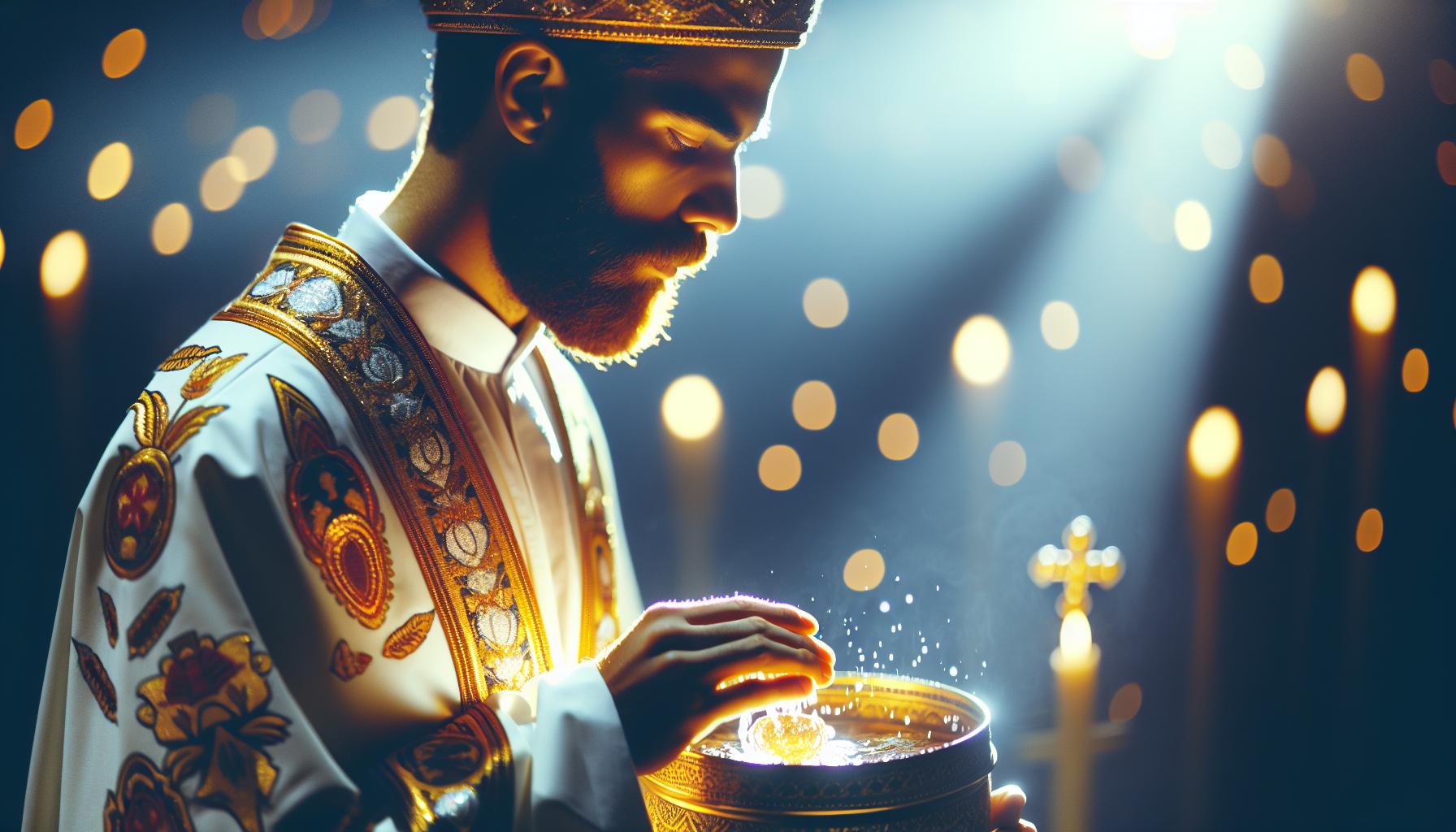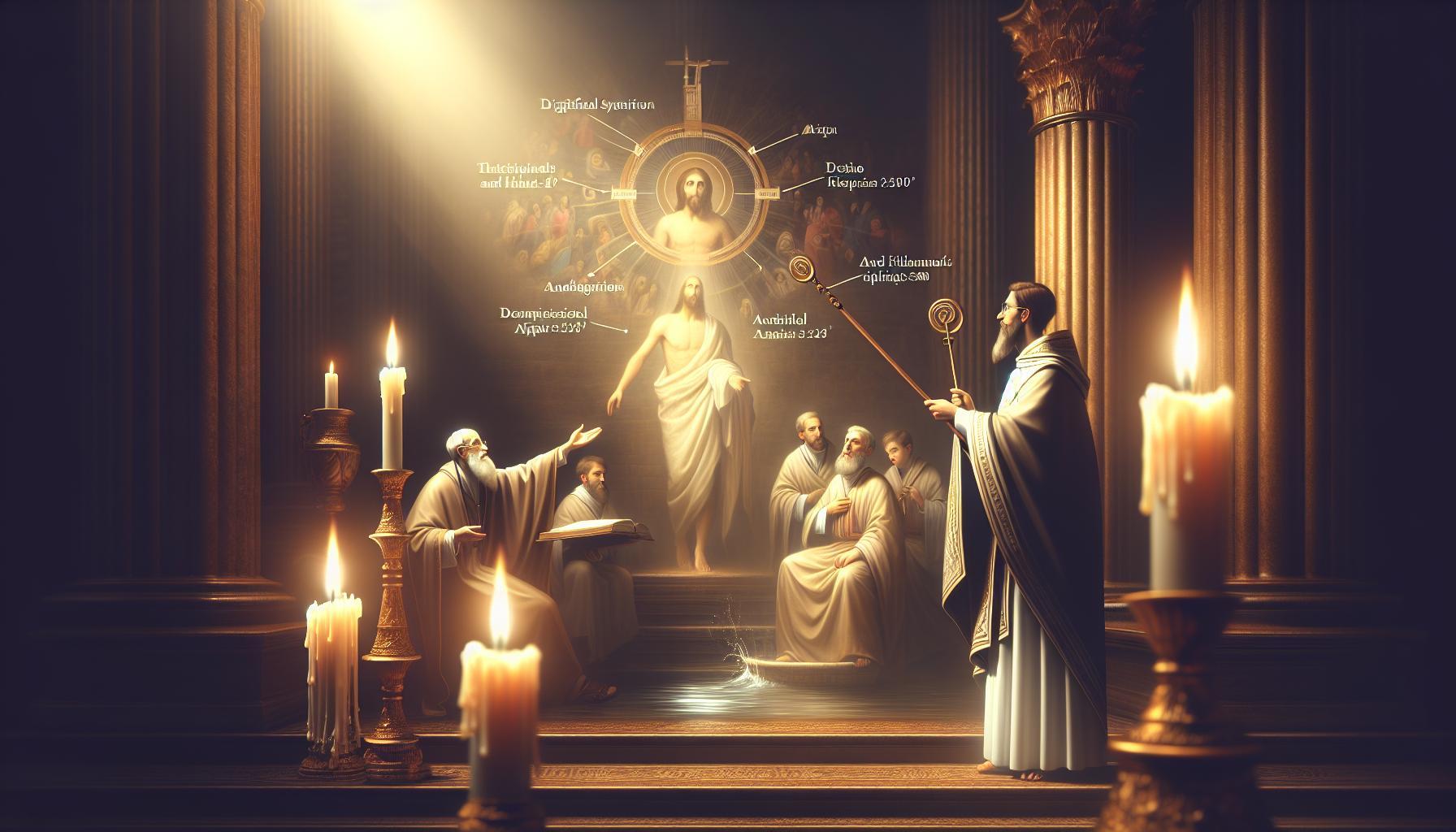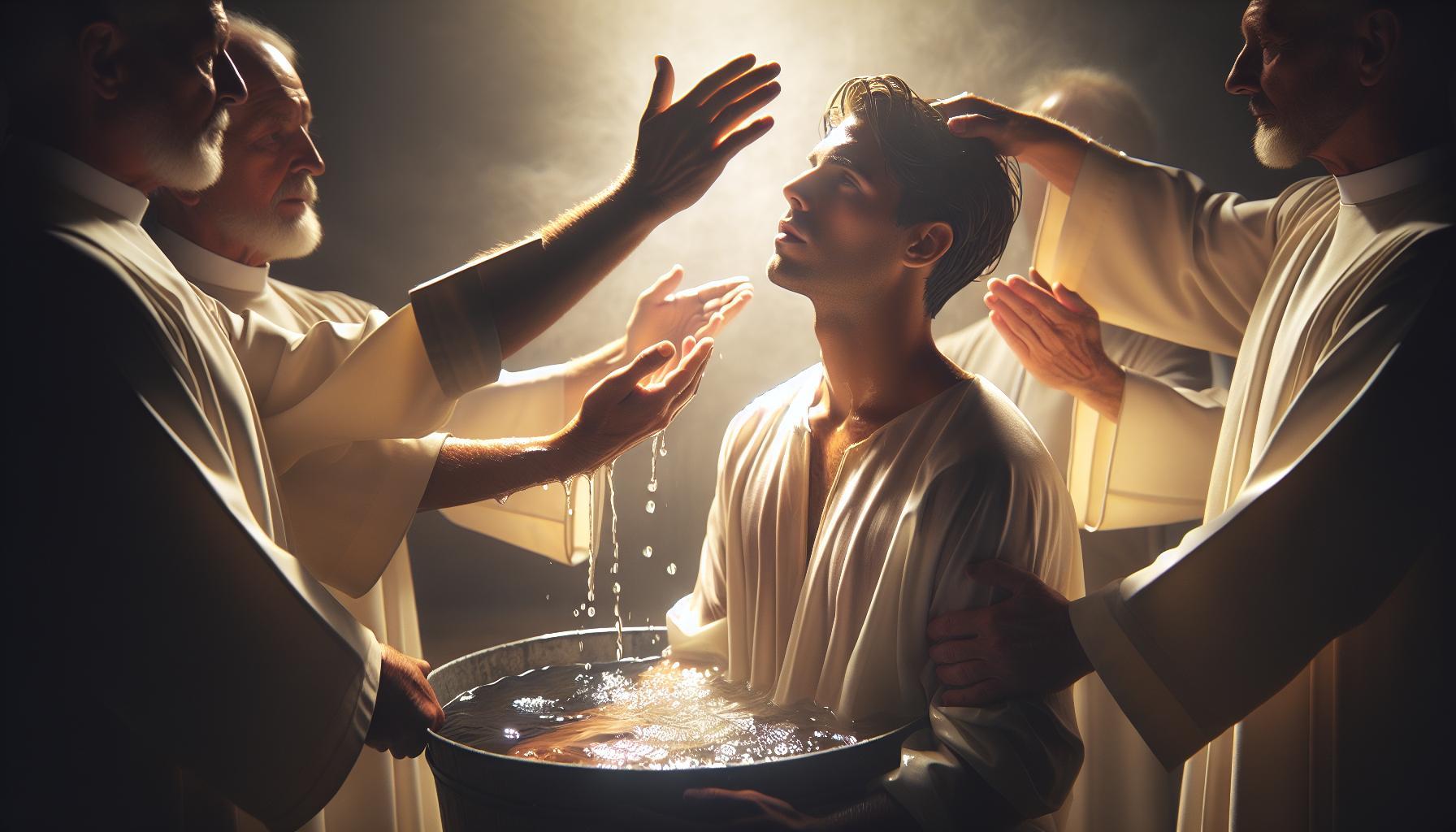Baptism is a profound milestone in the faith journey, yet many ministers and families find themselves uncertain about how to properly perform this sacred rite. Understanding the essential steps not only honors tradition but also enriches the spiritual experience for everyone involved. This guide will equip you with the knowledge to conduct meaningful baptisms with confidence and reverence.
Understanding the Significance of Baptism in Different Traditions
Understanding the significance of baptism across different Christian traditions reveals a rich tapestry of beliefs and practices that have evolved over centuries. At its core, baptism symbolizes initiation into the Christian faith and represents the washing away of sins. However, the methods and meanings attributed to this sacred rite vary significantly among different denominations, creating a diverse landscape of worship and community connection.
Variations in Baptism Practices
Baptism practices reflect essential theological principles of each tradition. For instance, in the Orthodox Church, baptism involves a full immersion in water three times, signifying the Holy Trinity. This act is not only a ritual of cleansing but also a profound union with Christ, making the individual a member of the Body of Christ [3[3]. In contrast, many Protestant denominations may practice sprinkling or pouring water over the individual’s head, a method known as affusion. This approach emphasizes faith over the quantity of water used, highlighting personal belief within the community of believers [2[2].
The Spiritual Journey of Baptism
Different faith traditions also imbue baptism with distinctive spiritual meanings. For instance, it serves as a moment of spiritual rebirth in many traditions, symbolizing a new beginning. During baptisms, participants often recite creeds and affirm their faith, which connects them to the shared beliefs of their faith community. This ritual serves as a unifying event, strengthening bonds among members and providing newcomers with a sense of belonging [1[1].
Practical Steps for Implementation
When exploring how to perform a baptism, it’s crucial for ministers and families to understand the specific traditions they belong to. Here are practical steps to guide the process:
- Preparation: Gather essential items such as a baptismal font, holy water, and symbolic items like a candle or white garment.
- Ritual Components: Include prayers, scripture readings, and sacraments relevant to the tradition.
- Community Involvement: Encourage participation from the congregation, enhancing the sense of communal support.
- Follow-Up: Plan for post-baptism activities like fellowship gatherings to strengthen relationships within the faith community.
The approach to baptism may vary widely, but the fundamental intention remains the same: to welcome individuals into the faith and to symbolize their commitment to a life guided by spiritual principles. Understanding these differences not only enriches one’s appreciation of baptism but also fosters deeper connections among diverse Christian communities.
Preparing for the Baptism: Roles of Ministers and Families
Preparing for a baptism is a significant event that encompasses both spiritual and practical dimensions. Understanding the collaborative roles of ministers and families can profoundly shape the experience of this sacred rite. While a baptism serves as an outward sign of faith and community, it is also a moment for families to reflect on their commitment to nurturing a child’s spiritual journey. This is particularly poignant in infant baptisms, where parents and godparents take on the responsibility of guiding the child in their faith.
Roles of the Minister
The minister holds a vital role in orchestrating the baptism ceremony, serving not just as an officiant but as a spiritual guide. Their responsibilities include:
- Preparation: Ministers often lead preparatory sessions for parents and godparents, ensuring they understand the significance of the sacrament and their commitments.
- Conducting the Ritual: During the baptism, the minister demonstrates the sacramental acts—such as the pouring of water and the pronouncement of the child’s name—following specific liturgical guidelines.
- Spiritual Support: Beyond the ceremony, ministers may provide ongoing pastoral support to families, assisting them in integrating the baptism into the child’s faith journey.
- Community Connection: By welcoming newly baptized individuals into the church community, ministers reinforce the collective commitment to nurture faith among all members.
Responsibilities of Families
Families play an equally critical role in the baptism process, as they are the primary influencers of their child’s faith. Their responsibilities include:
- Choosing Godparents: Selecting godparents who will serve as spiritual mentors creates a network of support for the child’s growth in faith.
- Active Participation: Families are encouraged to take an active role in the baptism service, whether through readings, prayers, or reflections that contribute to a communal atmosphere of faith.
- Nurturing Faith: Following the baptism, parents and godparents should regularly engage in practices such as prayer and education to instill the values of their faith in the growing child.
- Community Engagement: By participating in church activities and nurturing relationships within the parish, families help reinforce the importance of community as a pillar of faith.
Together, the ministers and families create a sacred space during the baptism, marked by celebration and commitment. This collaboration is essential for cultivating a deep-rooted faith that extends far beyond the ritual itself, laying a foundation for a lifelong spiritual journey. Understanding these roles, as outlined in resources such as the “How to Perform a Baptism? Step-by-Step Guide for Ministers and Families,” enables both parties to prepare effectively for this joyous occasion.
Essential Elements of a Baptism Ceremony: What to Include
Beginning a baptism ceremony is a moment of profound significance, as it marks the entry of an individual—often a child—into the faith community. Essential elements within the ceremony serve not only as rituals but also as important symbols conveying deeper spiritual meanings. Each aspect helps participants connect with the sacredness of the act—transforming a simple gathering into a powerful affirmation of faith.
Core Components of the Baptism Ceremony
When planning a baptism, several key elements should be thoughtfully included to ensure the ceremony is both meaningful and memorable. Here are some of the core components:
- Preparation and Rituals: Before the baptism itself, it is customary to gather the congregation for prayers and scriptural readings. This sets a reverent tone and invites God’s presence into the ceremony.
- The Water: Central to the baptism is the use of water, symbolizing purification and rebirth. The minister typically uses holy water as a sign of the individual’s entrance into the faith.
- The Invocation: The minister invokes the Trinity, acknowledging the Father, Son, and Holy Spirit. This essential prayer signifies the sacred nature of the baptism and aligns the ceremony with Christian beliefs.
- Renunciation and Profession of Faith: For older candidates, there is an important moment to renounce sin and affirm faith, marking a conscious commitment to the journey of discipleship.
Symbolic Acts During Baptism
Each symbolic act during the baptism enhances its significance, creating a rich tapestry of meaning for all involved. Here are noteworthy actions that should be part of the ceremony:
- Anointing with Oil: Anointing signifies empowerment from the Holy Spirit, marking the individual as a member of the community and a bearer of grace.
- Lighting of a Candle: Often, a baptism includes the lighting of a candle from the paschal candle, representing Christ as the light of the world and the child’s new life in faith.
- Community Involvement: Encouraging family and friends to take part underscores the communal aspect of the faith—reminding the baptized that they are never alone in their spiritual journey.
Incorporating these elements into the baptism ceremony not only honors tradition but also fosters a deeper connection to the faith for those participating. This amalgamation of rituals, prayers, and community affirmation distinctly embodies the guidance provided in a comprehensive resource such as the ‘How to Perform a Baptism? Step-by-Step Guide for Ministers and Families.’ The careful execution of these elements will ensure that the experience is impactful, spiritually enriching, and memorable for all involved.
The Step-by-Step Process of Conducting a Baptism
Conducting a baptism is a profound moment in both individual and community life, representing a significant spiritual milestone. This sacred ritual not only signifies the initiation of individuals into the faith but also fosters a sense of belonging and commitment within the community. Understanding the step-by-step process ensures that the ceremony is meaningful and resonates with everyone present. Here’s a clear guide on how to perform a baptism effectively, whether you’re a minister, family member, or friend.
The Preparation Phase
Before the ceremony, the groundwork must be laid. This includes:
- Selecting the Right Venue: Choose a location suitable for the baptism, such as a church or a natural body of water.
- Gathering Participants: Ensure that the baptismal candidates, parents, and godparents are present and prepared for this rite.
- Purpose Discussions: Have conversations about the meaning of baptism with those involved, especially if it’s for a child.
The Baptism Process
Once preparation is complete, you can proceed with the actual baptism. Here’s how to do it:
- Invocation: Begin with an invocation, inviting the presence of God and setting the tone for the ceremony.
- Renunciation of Sin: The parents (or the candidate, if old enough) renounce sin and profess their faith.
- Baptismal Blessing: The minister blesses the baptismal water, emphasizing its significance in the baptismal act.
- The Baptism: Immerse the individual in water or use a pouring method, saying the words, “I baptize you in the name of the Father, and of the Son, and of the Holy Spirit.”
Post-Baptism Rituals
After the baptism, it is vital to conclude the ceremony thoughtfully. Consider the following:
- Lighting of the Candle: Light a baptismal candle, symbolizing the light of Christ and the new life that has begun.
- Confirmation and Anointing: For some traditions, anointing the candidate with oil signifies their new identity in the faith.
- Community Involvement: Encourage the congregation to welcome the baptized warmly, reinforcing the community’s support.
As you navigate through these steps, it is essential to stay flexible and respectful of individual beliefs and traditions surrounding baptism. Whether you’re following a specific religious guide or creating your unique ceremony, the essence of this sacrament remains the same: a declaration of faith and entry into a community.
Personalized Touches: Making the Ceremony Meaningful
Creating a baptism ceremony that resonates on a personal level is a beautiful way to celebrate this milestone in a child’s life. Personal touches during the ceremony can infuse deeper meaning, transforming a traditional event into a cherished memory for both the family and the community. Connecting the ceremony to personal beliefs, histories, and aspirations can enhance its significance, making it not just a ritual but a heartfelt celebration.
Incorporating Personalized Gifts
One of the most impactful ways to add a personal touch to a baptism is through thoughtful gifts. Consider personalized baptism items that reflect the child’s journey and the family’s values. Here are some meaningful options:
- Customized Picture Frames: Engraved frames can hold cherished photos from the ceremony, making them a lasting keepsake that captures the moment forever. You can find beautiful options, such as a personalized baptism picture frame, which holds a 4×6 photo and allows for engraving names and dates [[1](https://www.amazon.com/personalized-baptism-frame/s?k=personalized+baptism+frame)].
- Blankets and Clothing: A monogrammed muslin blanket or a custom gown can make a lasting impression. These gifts not only keep the child warm but also symbolize love and protection [[2](https://www.etsy.com/market/personalized_baptism_gift)].
- Religious Symbols: Engraved religious items, such as a compass or a small Bible, can serve as lasting reminders of faith and guidance [[2](https://www.etsy.com/market/personalized_baptism_gift)].
Creating a Meaningful Ceremony Environment
Beyond gifts, the environment in which the baptism takes place plays a crucial role in its overall impact. Personalize the venue with decorations that resonate with the child’s identity and family heritage. Items like personalized banners, floral arrangements that carry special meanings, or even meaningful colors tied to the family’s culture can enrich the ambiance.
Additionally, consider incorporating sentimental readings or songs that hold special significance for the family during the ceremony. This not only amplifies the emotional experience but also invites guests to connect more deeply with the meaning behind the baptism.
Engaging Family and Friends
Lastly, involving family and friends can amplify the personalized experience. Select godparents or guardians who embody the values the family wishes to instill in the child, emphasizing their role in the child’s spiritual journey. Participation in the ceremony, whether through shared vows or spoken blessings, creates a communal atmosphere that fosters love and support.
By weaving together these personalized elements, the baptism can transcend mere tradition, becoming a heartfelt homage to family, faith, and the spirit of community, effectively capturing the essence of what it means to perform a baptism in a modern, meaningful way.
Post-Baptism: Celebrations and New Beginnings
Following a baptism, the celebrations are a joyful expression of faith, love, and community. This momentous occasion not only marks a spiritual milestone but also serves as a gateway to new beginnings in the life of the baptized child and their family. The post-baptism celebration is an opportunity to gather friends, family, and the church community, allowing everyone to share in the joy of this sacred moment.
Planning a Memorable Celebration
The first step in creating a memorable post-baptism celebration is determining the perfect venue. Options may include hosting the gathering at home, the residence of a loved one, or even a local restaurant or community hall. This decision sets the tone for your celebration. Once the location is secured, you can focus on the details that will enhance the festive spirit:
- Thematic Decorations: Incorporate symbols of faith and new beginnings such as crosses, angels, or doves.
- Catering Choices: Consider a menu that reflects the preferences of your guests, ranging from traditional family recipes to trendy dishes.
- Activities and Entertainment: Plan engaging activities for both children and adults to keep attendees entertained.
Making Meaningful Memories
This celebration is also a perfect opportunity to create cherished memories. You might consider arranging for a professional photographer to capture candid moments, or even setting up a DIY photo booth with fun props. Additionally, compiling a guestbook for everyone to write their wishes and blessings for the baptized child creates an enduring keepsake that the family can treasure for years to come.
Gifting Ideas to Cherish the Moment
Another aspect to consider is the gifting tradition. Often, godparents and family members present symbolic gifts to the child. Here are a few thoughtful suggestions:
| Gift Idea | Meaning |
|---|---|
| Personalized Bible | A cherished book that can guide the child through their spiritual journey. |
| Cross Necklace | A symbol of faith that the child can wear through life’s milestones. |
| Memory Box | A space to store keepsakes from the baptism day and beyond. |
As families reflect on the momentous event of the baptism, they can celebrate the new chapter in their lives. Through meaningful gatherings, thoughtful gifts, and joyful memories, the post-baptism festivities can reinforce the bonds of family and community while honoring the profound significance of this cherished ritual.
Common Questions and Considerations for Ministers and Families
Baptism is a pivotal moment in a family’s spiritual journey, marking the beginning of a child’s life of faith. However, many families and ministers have common questions that arise during the preparation and execution of this sacred rite. Understanding the intricacies involved can significantly enhance the experience for everyone involved.
Key Considerations for Families
Families often ponder what they need to prepare for a baptism. It’s essential to understand the roles of parents and godparents, as these individuals play critical parts in the spiritual upbringing of the child. Choosing suitable godparents, who are ideally active members of the faith community, can provide a support system for the family. Since baptism is not just a ceremony but also a commitment to raise the child in faith, parents should be prepared to discuss their faith journey and the significance of baptism in their lives.
Furthermore, families should consider practical aspects such as timing and venue. Planning the baptism during a significant liturgical season, such as Easter or Advent, can enhance the event’s spiritual depth. Many families opt for a more personal touch by choosing a location that holds special meaning, which could be the family’s home church or a picturesque outdoor setting.
Common Questions for Ministers
Ministers frequently address various queries from families regarding the baptism process. One fundamental question revolves around the timing of the baptism itself. Parents often ask whether it is appropriate to baptize a child shortly after birth or if there should be a wait until a specific age or milestone. While practices vary across denominations, many suggest that the immediate baptism of infants is an important tradition that emphasizes the grace offered through the sacrament.
Another prevalent inquiry pertains to the ceremony’s structure. Families want to know what to expect during the baptism, including the specific rituals involved. Engaging the families in this conversation allows ministers to clarify each element’s significance, from the pouring of water to the anointing with oil, which can help deepen the family’s appreciation for the sacrament.
Preparing for the Day
As the baptism day approaches, both families and ministers can benefit from collaborative preparation. Families should consider a rehearsal, particularly if multiple children are being baptized, to ensure that everyone understands their role during the service. Ministers can provide a checklist to families, covering aspects such as the choice of readings, hymns, and any personal touches that reflect the family’s culture and faith.
By addressing these common questions and considerations, ministers and families can work together to create a meaningful and memorable baptism experience. This cooperative spirit not only fosters a supportive environment but also emphasizes the sacramental nature of the event, as families embark on a significant chapter in their spiritual journey.
Q&A
What is baptism and why is it important?
Baptism is a sacred rite signifying the initiation into the Christian faith, representing purification and rebirth. It is essential for welcoming individuals into the community of believers and serves as a public declaration of faith in Christ.
In several Christian traditions, baptism symbolizes not just cleansing from sin but also a new life in Jesus. It is based on the commands of Jesus to baptize as recorded in the Gospels, making it an essential practice within the community of faith where ministers and families take part in this historic ceremony.
How to perform a baptism?
To perform a baptism, gather the necessary materials: water and a baptismal font, and prepare a brief spoken declaration of intent. Use the prescribed words: “I baptize you in the name of the Father, and of the Son, and of the Holy Spirit.”
The selection of a suitable location, whether in a church or outdoors, allows families to engage meaningfully. Participate in a celebratory atmosphere, often involving family and friends. It is vital to reflect the context and significance of this sacramental act.
Can you baptize someone outside a church setting?
Yes, baptism can occur outside of traditional church settings. Many communities celebrate outdoor baptisms in rivers, lakes, or backyards, emphasizing the personal significance of the event.
This practice reinforces the idea that the community of faith is gathered wherever believers are, highlighting God’s presence in diverse spaces. However, ensure that the essential components, such as water and the appropriate words, are present.
Why is water used in baptism?
Water symbolizes cleansing and is essential in baptism as it represents the washing away of sin and the birth into new life in Christ. It is critical to the sacramental act, aligning with biblical teachings.
This practice reflects the importance of purification and rebirth found in scripture. Many denominations emphasize using natural sources like rivers or lakes to highlight the spiritual connection between water and life.
What should families know before a baptism?
Families should understand the significance of the baptismal vows. Parents and godparents often make commitments to raise the child in the faith, which involves nurturing their spiritual growth.
It is crucial for families to discuss and prepare for this ceremony together, considering elements such as scripture readings, prayers, and celebration. For detailed insights, read more about baptism practices on the Diocese’s FAQ about baptism.
Can adults be baptized like children?
Absolutely, adults can undergo baptism just like children. In fact, many traditions emphasize baptism as a personal choice in adulthood, often termed ‘believer’s baptism’.
Adults may choose baptism after a period of instruction in the faith, highlighting a personal commitment to Jesus. This form reinforces the understanding that baptism is a personal decision reflecting one’s faith journey.
How is baptism related to salvation?
Baptism is seen as an important step towards salvation, acting as a public declaration of faith and commitment to following Christ. While many traditions emphasize the act as essential, interpretations vary.
In some views, baptism is necessary for salvation, while in others, it symbolizes faith already present, believing that faith is paramount. This distinction can vary across denominations, reflecting different theological perspectives on this sacrament.
Insights and Conclusions
As we conclude this step-by-step guide on performing a baptism, we hope you feel equipped and inspired to engage in this sacred tradition with reverence and understanding. Baptism not only signifies a personal commitment to faith but also embodies the rich theological themes of death, burial, and resurrection, as outlined in scripture (Romans 6:3-4) [[2]].
Whether you are a minister guiding a congregation or a family welcoming a loved one into a faith community, the act of baptism is a powerful moment of spiritual significance. As you carry out each step—from preparation to the actual immersion—remember the intent behind the ritual: to celebrate new life in Christ and encourage a lifelong journey of faith [[2]].
We invite you to further explore the diverse expressions and meanings of baptism across various traditions. Consider how different denominations approach this sacred practice and the theological insights they offer. Engage with your community, share your experiences, and continue to learn how baptism can affirm not only individual commitments but also the communal bonds that unite believers.
Thank you for reading, and may your conversations and reflections on baptism lead to deeper faith and understanding for everyone involved.





